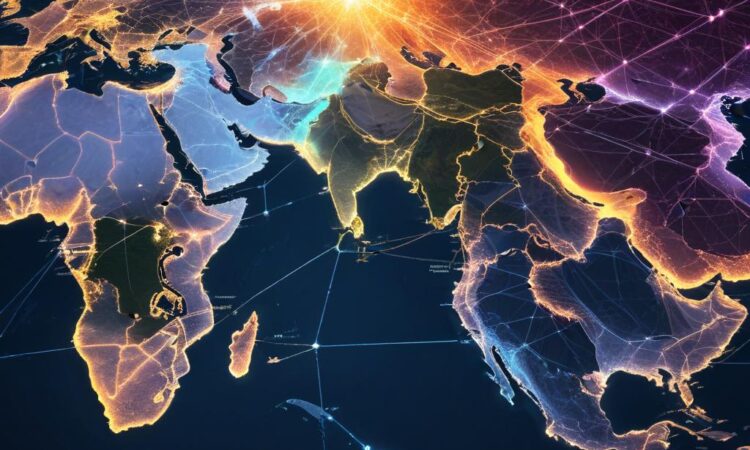Supply Chain Disruptions and their Economic Impact
Although easing somewhat, global supply chain disruptions continue to impact businesses and consumers worldwide. While some bottlenecks have cleared, others remain, contributing to higher production costs and inflationary pressures. The resilience of supply chains remains a key concern for many economies. Recent reports highlight the need for greater diversification and enhanced resilience strategies.
The Evolving Landscape of Global Supply Chains
The global supply chain, a complex network of interconnected businesses and logistics, has faced unprecedented challenges in recent years. The COVID-19 pandemic exposed vulnerabilities in the system, leading to widespread shortages, delays, and increased costs. While the immediate crisis has subsided, the lingering effects continue to ripple through the global economy. Factors such as geopolitical instability, extreme weather events, and shifts in consumer demand all contribute to the ongoing volatility.
One of the most significant impacts is the rise in inflation. Disruptions to the flow of goods have led to shortages and increased prices, impacting everything from consumer goods to raw materials. Businesses are struggling to manage rising input costs, and consumers are facing higher prices at the checkout. This inflationary pressure is a major concern for central banks worldwide, which are grappling with the challenge of maintaining price stability without triggering a recession.
Regional Variations and Sectoral Impacts
The impact of supply chain disruptions is not uniform across all regions or sectors. Some industries, such as automotive manufacturing and electronics, have been particularly hard hit by shortages of critical components. The geographical location of production and distribution networks also plays a significant role. Countries heavily reliant on specific suppliers or transportation routes have been more vulnerable to disruptions.
For instance, the semiconductor shortage has had a cascading effect across various sectors, impacting the production of automobiles, consumer electronics, and industrial machinery. Similarly, disruptions to shipping and logistics have led to delays and increased costs for businesses across the globe. Understanding these regional and sectoral variations is crucial for developing effective mitigation strategies.
Strategies for Enhancing Supply Chain Resilience
In the face of ongoing challenges, businesses are increasingly focusing on strategies to enhance the resilience of their supply chains. This involves diversifying sourcing, investing in advanced technologies, and strengthening relationships with suppliers. Greater transparency and collaboration within the supply chain are also essential for improving responsiveness and adaptability.
Diversifying sourcing helps reduce reliance on single suppliers or geographical regions. This can mitigate the risk of disruptions due to geopolitical instability, natural disasters, or pandemics. Investing in advanced technologies, such as blockchain and artificial intelligence, can improve visibility and efficiency within the supply chain, enabling businesses to better anticipate and respond to disruptions.
Stronger relationships with suppliers are crucial for building trust and collaboration. Open communication and information sharing can help businesses anticipate potential problems and work together to find solutions. This approach fosters greater resilience and adaptability in the face of unexpected events.
Governmental Roles and Policy Responses
Governments also play a crucial role in enhancing supply chain resilience. Policy interventions can include investments in infrastructure, trade facilitation, and regulatory reforms. Supporting domestic production and fostering innovation can also strengthen national supply chains. International cooperation is essential for addressing global supply chain challenges.
Investments in infrastructure, such as ports, roads, and railways, are crucial for efficient transportation of goods. Trade facilitation measures, such as streamlined customs procedures, can reduce delays and costs. Regulatory reforms can promote competition and innovation within the supply chain. Supporting domestic production can reduce reliance on foreign suppliers, enhancing national security and economic stability.
International cooperation is essential for addressing global supply chain challenges. Sharing information, coordinating policies, and collaborating on research and development can help countries collectively mitigate risks and build more resilient supply chains. This requires a commitment to multilateralism and a willingness to work together to address shared challenges.
The Long-Term Outlook
The long-term outlook for global supply chains remains uncertain. While some disruptions are easing, new challenges are likely to emerge. Climate change, geopolitical tensions, and technological disruptions all pose potential risks to the stability of global supply chains. Continuous adaptation and innovation will be essential for navigating these challenges and building a more resilient and sustainable system.
Businesses need to remain vigilant and adaptable, constantly monitoring risks and developing contingency plans. Governments need to invest in infrastructure, promote innovation, and foster international cooperation. Consumers need to be aware of the complexities of global supply chains and the impact of their purchasing decisions. Only through a collaborative effort can we build a more resilient and sustainable global supply chain system.
The ongoing evolution of global supply chains requires a holistic approach. It demands a combination of technological advancements, strategic partnerships, and proactive policy interventions to mitigate risks and build resilience against future disruptions. The focus must shift towards building more agile and responsive supply chains, prepared to navigate the complexities and uncertainties of the global landscape.
Further research and analysis are needed to fully understand the long-term implications of supply chain disruptions and to develop effective strategies for mitigating future risks. This includes studying the impact of technological advancements, analyzing the effectiveness of different resilience strategies, and exploring the role of international cooperation in building a more sustainable and robust global supply chain system.
The continued monitoring and analysis of supply chain performance indicators, coupled with the development of predictive models, are crucial for early detection of potential disruptions. This proactive approach will allow for timely intervention and mitigation measures, minimizing the economic and social impact of future shocks.
In conclusion, while the immediate crisis of global supply chain disruptions may be easing, the underlying vulnerabilities remain. A concerted effort from businesses, governments, and international organizations is required to build a more resilient, sustainable, and adaptable global supply chain system, ensuring economic stability and prosperity for years to come.

